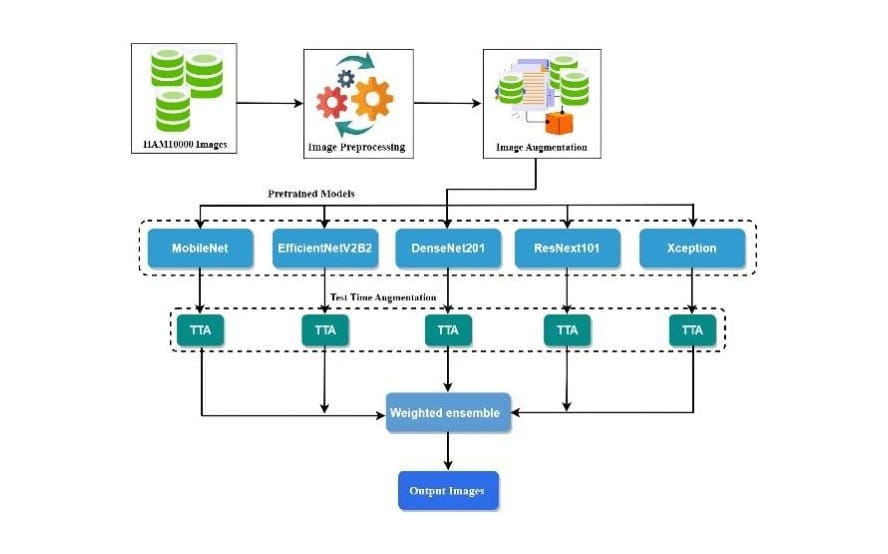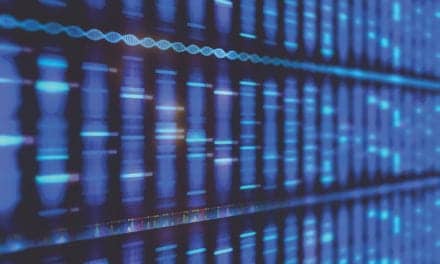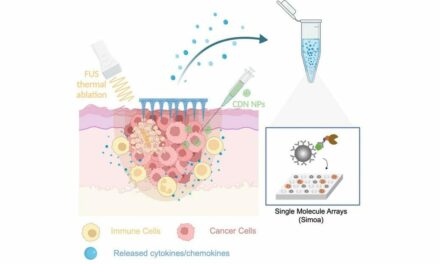Summary: A new study introduces an AI-powered diagnostic model with 94.49% accuracy, leveraging transfer learning and test-time augmentation to improve skin cancer detection and patient outcomes.
Takeaways:
- Advanced AI Integration: The study developed a deep learning model combining five state-of-the-art transfer learning frameworks to classify skin lesions into seven categories, achieving high diagnostic precision.
- Innovative Techniques: Using test-time augmentation (TTA) and weighted ensemble approaches, the model enhances generalization and outperforms current dermatological diagnostic methods.
- Global Impact: The technology has potential applications in telemedicine and underserved regions, reducing unnecessary biopsies and improving early detection, paving the way for accessible, cost-effective healthcare solutions.
A new study aims to address the challenges of accurately identifying skin cancer through advanced AI-driven diagnostic methods, enhancing the potential for early intervention and better patient outcomes.
New AI-Model for Skin Cancer Diagnostics
Led by Aliyu Tetengi Ibrahim and his team at Ahmadu Bello University, this study, published in Data Science and Management on Nov. 2, 2024, introduces an AI model that could revolutionize the way dermatologists detect skin cancer.
By harnessing the power of transfer learning and test time augmentation (TTA), the team has developed a model that categorizes skin lesions into seven distinct categories. Their work represents a significant leap forward in dermatological research, offering new hope for improving diagnostic accuracy and patient care.
Classifying Skin Lesions
In this pioneering research, Ibrahim and his colleagues developed a sophisticated deep learning model that integrates five state-of-the-art transfer learning models to classify skin lesions into categories such as melanoma, basal cell carcinoma, and benign keratosis, among others. Trained on the expansive HAM10000 dataset of over 10,000 dermoscopic images, the model achieved an impressive 94.49% accuracy rate.
A key innovation in this study is the use of TTA—a technique that artificially enlarges the dataset by applying random modifications to test images. This boosts the model’s ability to generalize across a wide range of skin lesions, improving diagnostic precision. The weighted ensemble approach, which combines the strengths of individual models, outperforms other current methods in the field, offering a powerful tool for dermatological diagnostics.
“The integration of deep learning in dermatology is not just an advancement; it’s a necessity,” says lead researcher Aliyu Tetengi Ibrahim. “Our model’s high accuracy rate can reduce the need for unnecessary biopsies and promote earlier detection, ultimately saving lives by helping dermatologists make more informed decisions. This breakthrough is a clear example of how AI can augment medical expertise and provide critical support in the fight against skin cancer.”
Potential Applications of AI
The potential applications of this AI model in clinical settings are immense. It could streamline the diagnostic process, reduce healthcare costs, and enhance patient care, especially in regions with limited access to dermatological expertise, according to researchers.
Integrating this technology into telemedicine platforms could democratize access to skin cancer diagnosis, bringing advanced medical care to underserved populations. By improving the accuracy of skin cancer detection, this research has the potential to reshape global healthcare, making life-saving diagnostics more accessible and affordable to people around the world.
Featured image: The proposed model architecture. Note: TTA: test-time augmentation. Photo: Data Science and Management





